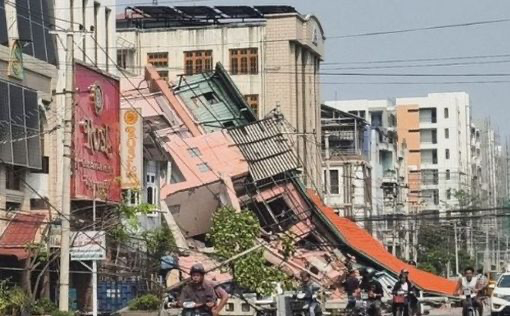A powerful 7.7-magnitude earthquake struck central Myanmar on Friday, leaving a trail of destruction and claiming the lives of over 1,000 people. The quake, which occurred near the city of Sagaing in the country’s central region, was followed minutes later by a strong 6.7-magnitude aftershock, compounding the damage and panic across the area.
One of the hardest-hit regions is Mandalay, Myanmar’s second-largest city, home to more than 1.7 million people. The tremors caused widespread devastation—buildings crumbled, bridges collapsed, and roads buckled. Among the structures severely affected was the Sky Villa condominium complex, where authorities fear more than 90 residents could still be trapped beneath the rubble.
According to a statement released by Myanmar’s ruling military junta, at least 1,002 people have been confirmed dead, with more than 2,300 others injured. Emergency crews and volunteers are continuing search and rescue operations, working around the clock in a desperate attempt to find survivors.
The impact of the earthquake was also felt in neighboring Thailand. In Bangkok, a high-rise building under construction partially collapsed, resulting in at least six confirmed deaths and dozens of people reported missing. Thai authorities have launched an investigation and dispatched emergency teams to assist in search efforts.
In response to the unfolding humanitarian crisis, Myanmar has declared a state of emergency in six of the worst-affected regions and issued a rare call for international assistance. Several countries, including China, India, Russia, and members of ASEAN, have already begun sending aid, rescue personnel, and medical supplies. The United Nations has also pledged financial support for relief efforts.
With many remote areas still unreachable due to damaged infrastructure, officials warn that the death toll is likely to rise in the coming days. As rescue operations continue, the country braces for further aftershocks and the long road to recovery.




